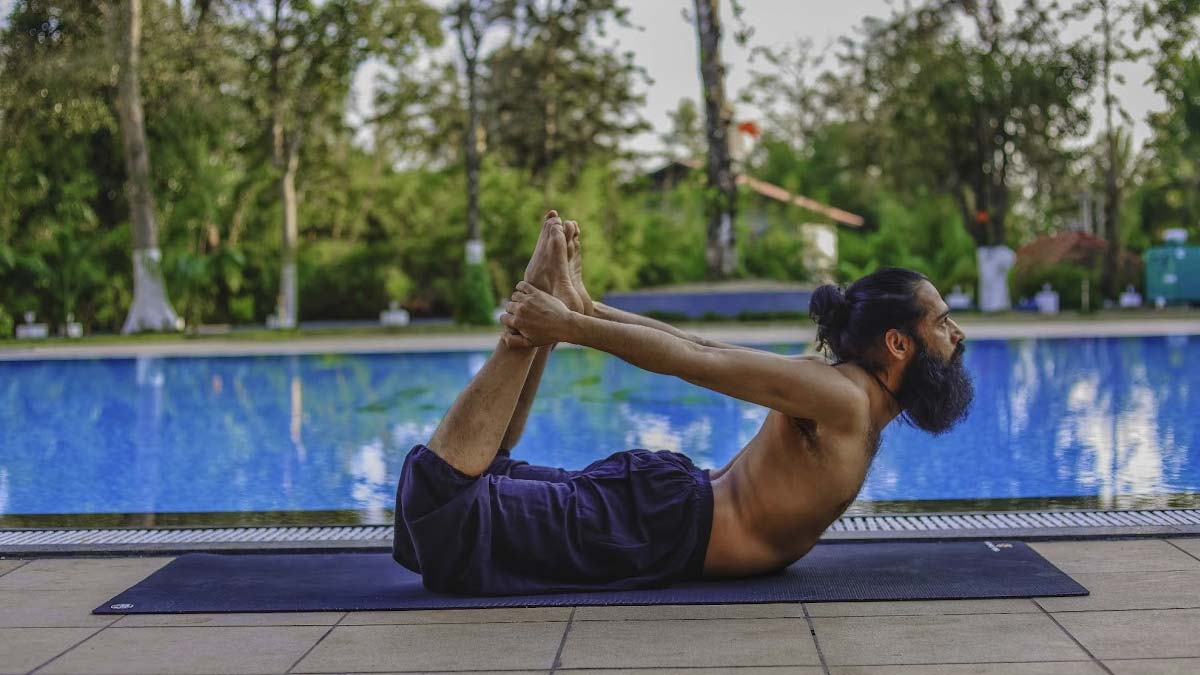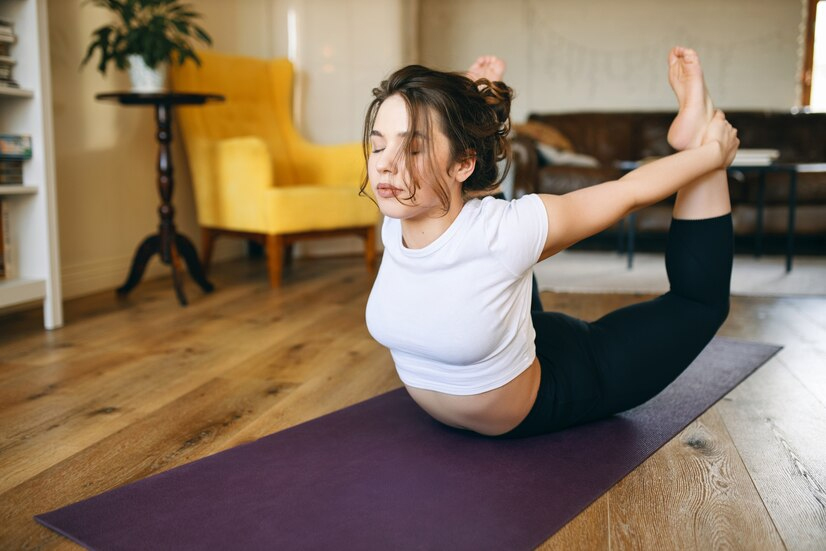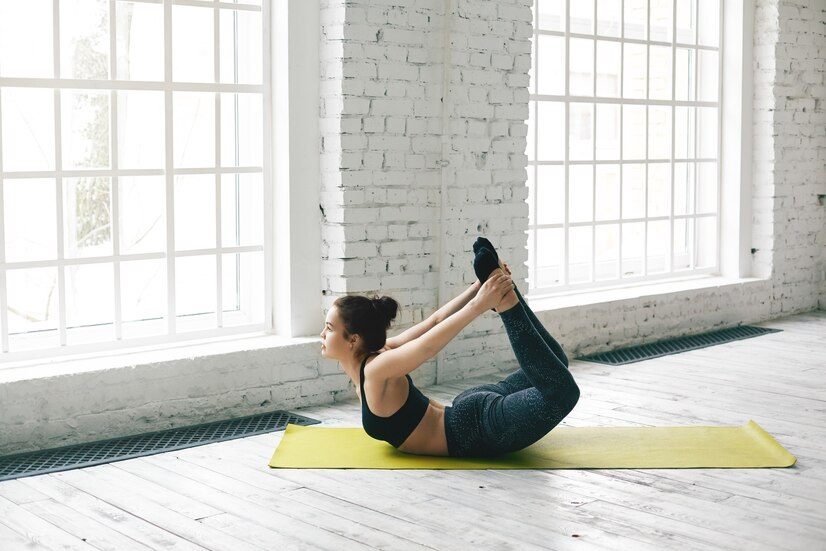
In the realm of yoga, each asana carries its unique benefits, promoting physical health, mental well-being, and spiritual growth. One such powerful pose is Dhanurasana, commonly known as the Bow Pose. This invigorating backbend not only enhances flexibility but also strengthens the core, improves digestion, and boosts overall vitality.
To understand this asana, its benefits and how to practice it, OnlyMyHealth interacted with Himalayan Siddhaa Akshar, Author, Columnist,Founder: Akshar Yoga Kendraa, Yoga and Spiritual Leader.
“Dhanurasana, or the bow pose, is a powerful backbend in yoga that offers numerous physical and mental benefits. This asana gets its name from its shape, which resembles an archer's bow, with the body forming the bow and the arms the string,” Akshar explained.
Benefits of Dhanurasana

Here are some amazing benefits of Dhanurasana listed by Akshar:
1. Spine flexibility: The pose stretches and strengthens the entire spine, improving flexibility and posture.
2. Core strengthening: It engages the abdominal muscles, helping to tone and strengthen the core.
3. Chest opening: By expanding the chest, it improves lung capacity and breathing.
4. Digestive health: The pose massages the abdominal organs, potentially aiding digestion and relieving constipation.
5. Back pain relief: Regular practice may help alleviate mild back pain by strengthening the back muscles.
6. Stress reduction: Like many yoga poses, Dhanurasana can help reduce stress and anxiety.
7. Improved circulation: The pose stimulates blood flow throughout the body, particularly in the back and abdomen.
8. Thigh and hip flexor stretch: It provides an excellent stretch for the front of the thighs and hip flexors.
9. Shoulder and chest strengthening: The pose engages and strengthens the shoulders and chest muscles.
10. Stimulates endocrine glands: It may help balance hormones by stimulating the thyroid and adrenal glands.
Also read: How Does Yoga Help In Managing Your Postpartum Health
How to perform Dhanurasana

Giving a step by step guidance, Akshar explains the bow pose:
1. Start by lying face down on your mat with your arms at your sides, palms facing up.
2. Bend your knees, bringing your heels as close to your buttocks as possible.
3. Reach back with both hands and grasp your ankles. If this is difficult, you can use a strap around your ankles.
4. Inhale deeply, then as you exhale, lift your chest, head, and thighs off the mat simultaneously.
5. Pull your legs up and back while keeping your arms straight. Your body should form a bow-like shape.
6. Gaze forward or slightly upward, keeping your neck in a neutral position.
7. Hold the pose for 15-30 seconds, breathing steadily.
8. To release, exhale and slowly lower your chest, head, and legs back to the mat. Let go of your ankles and relax.
Also read: These Gentle Poses Can Help You Manage Arthritis
Tips for practicing Dhanurasana
- Warm up properly before attempting this pose, especially focusing on back and shoulder stretches.
- Keep your legs hip-width apart for balance and stability.
- Engage your core muscles to protect your lower back.
- If you have difficulty grasping your ankles, use a yoga strap or belt.
- Avoid this pose if you have serious back or neck injuries, high or low blood pressure, or are pregnant.
- Always listen to your body and come out of the pose if you experience pain.
As with any yoga practice, it's essential to approach Dhanurasana gradually, especially if you're new to backbends. Start with gentler variations and work your way up to the full pose. Regular practice will increase your flexibility and strength, making the pose more comfortable over time. Concluding, Akshar said, “Remember to breathe steadily throughout the pose, as this helps to deepen the stretch and maintain focus. With consistent practice, you'll likely notice improvements in your posture, spinal health, and overall well-being.”
Also watch this video
How we keep this article up to date:
We work with experts and keep a close eye on the latest in health and wellness. Whenever there is a new research or helpful information, we update our articles with accurate and useful advice.
Current Version